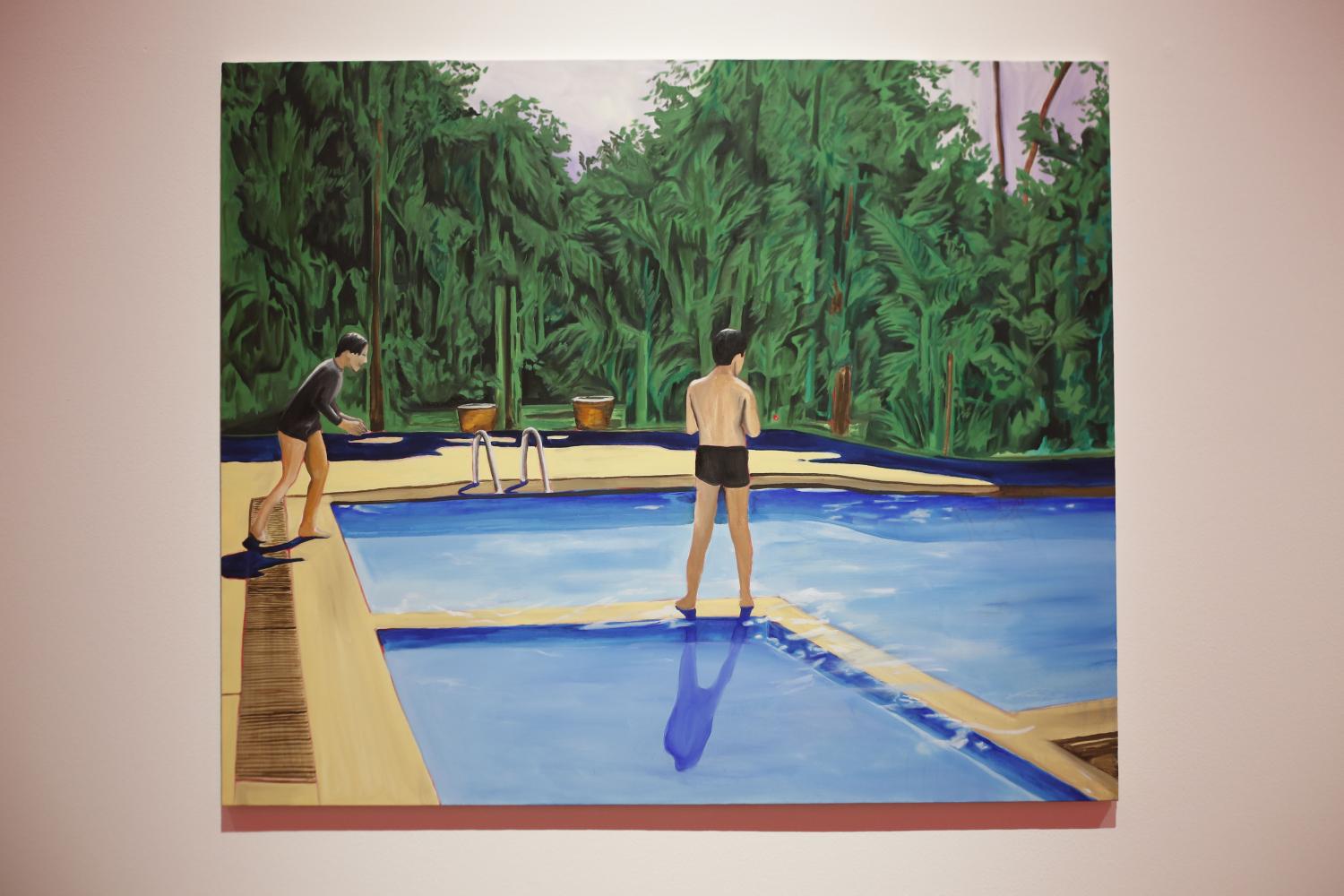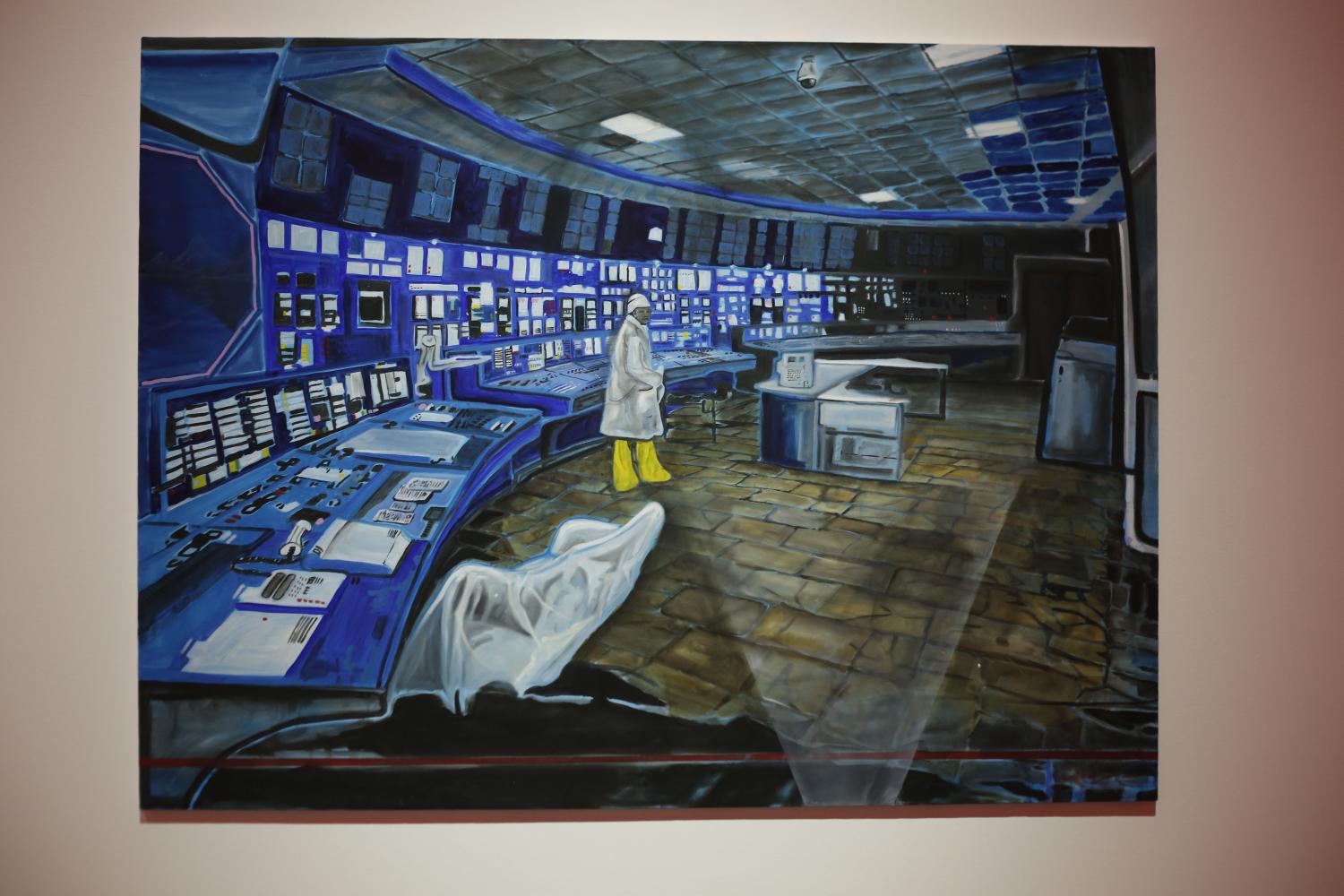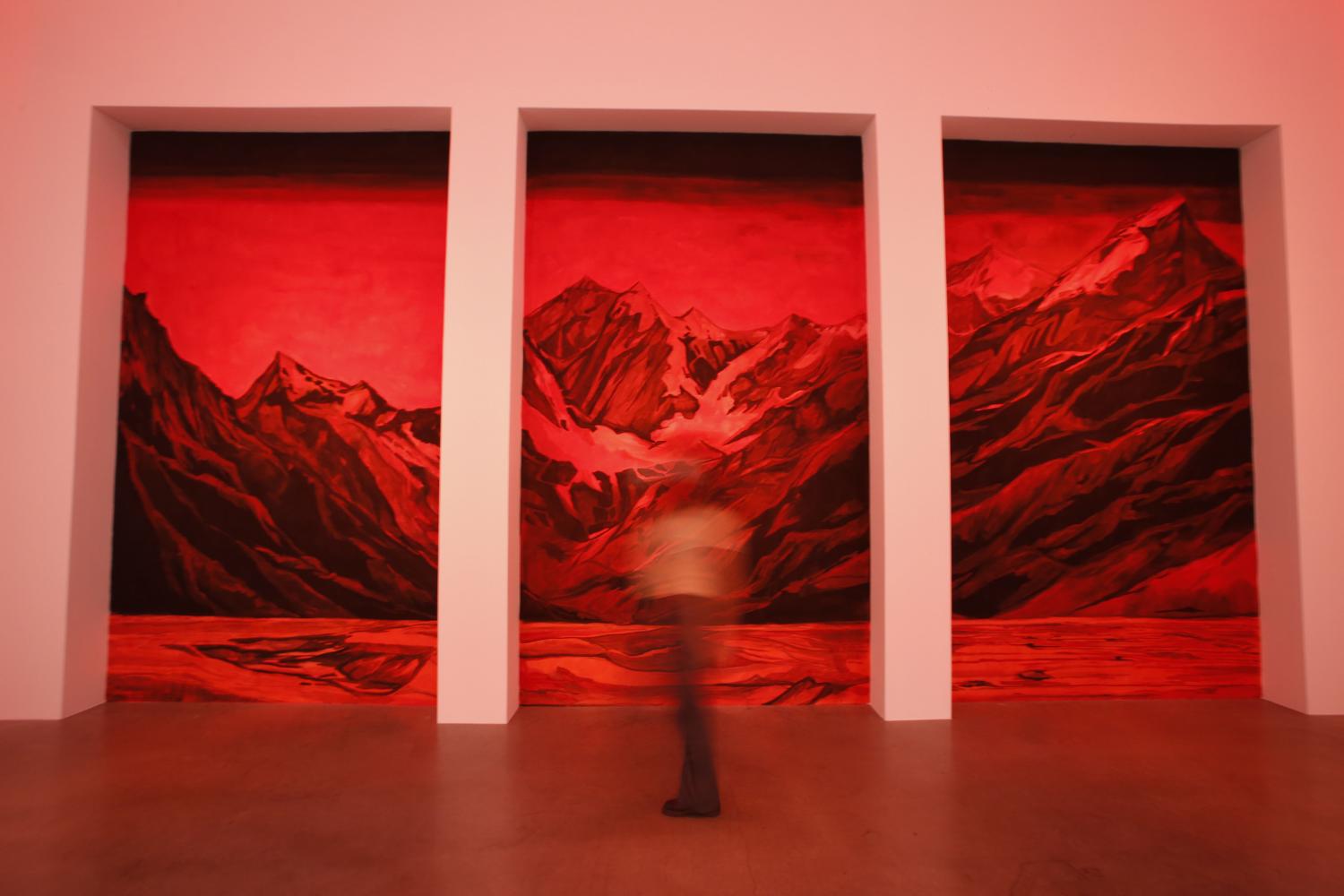In today's digital age, we are overwhelmed with an abundance of information, making it hard to remember everything we read or see. Similarly, emerging artist Dhanut Tungsuwan collected images he found online and selected 14 of his favourites as inspiration for paintings that are being exhibited at "Memory Machine".
"I had an affinity with these images since each has its own identity. All of them have a sense of duality within them. For example, one painting portrays two girls at the beach next to a boat which can be interpreted in two ways -- they could be leaving or perhaps they have just arrived. There's a sense of security but also a sense of anxiety. The paintings capture and preserve that moment just like how memories do," Dhanut explained.
Dhanut studied art and design at Central Saint Martins and Chelsea College of Art & Design in London. He has an affinity with Romanticism which encouraged him to start painting.
"Romanticism was a reaction against industrialisation which caused many workers to lose their jobs to machines. Romanticism emphasised nature over industry. In today's world, we are facing similar threats from digitalisation. I feel that surfing online or watching a documentary is similar to walking in a garden to get inspired just as how renowned artist David Hockney -- who famously said he walked into a garden to observe the flowers, trees and views when needing inspiration -- used to do," said Dhanut.
"I named the exhibition 'Memory Machine' because these images are fragments of my memory, some of which can be recognised and some which can't. I consider myself a painting machine because I follow a process where I input materials and then recreate them into a painting. I also refer to myself as a machine because we humans don't exist only in a physical world but also a digital world."

The painting Waving Or Drowning? (2020) has a sense of duality. The girls might or might not need help.
To represent his memory in an era of hyperconnectivity and information technology, some images were scanned onto a computer and some were taken using mobile phones. Dhanut looked at the images on both mediums and memorised them before painting. Afterwards, oil paintings on canvas were created to look flat just like how they do on computer screens.
"Since a painting refers to just some memories and not all, the colours used in the paintings are not realistic. They have been enhanced to become vivid. No painting in this collection was drawn from real-life observation. I observed everything on the screen. Being able to examine materials on a digital screen is powerful because I can zoom into every layer of the image," said Dhanut.
Life spoke to Dhanut at Bangkok CityCity Gallery about "Memory Machine", his interest in science-fiction movies, and technology.
How does the abundance of information affect the way you create your paintings?
Well, the internet provides us with many resources to digest. We can search for a painting like Mona Lisa online but get results in which many versions look different. Moreover, the internet allows us to create paintings without travelling anywhere. Since 2016, I have been compiling an archive of mountain images because I draw them so often. In fact, I can now accurately paint views of various mountains although I have never been there.

The Pool Day (2020) is drawn from moments that Dhanut only vaguely recalls.
What is the key message of the exhibition?
This is the first time in my life that I created artwork without any message since I didn't want the collection to become a lecture. The reason why I created the paintings is not important for visitors to know. Also, this collection isn't too abstract so I hope everyone can relate to it even if they didn't study art.
Why is The Weekend (2020) the only image in which we can see faces of subjects?
In this collection -- except for The Weekend -- visitors don't see faces because I want them to feel as if they are in the painting themselves. However, The Weekend is different since it is a self-portrait of my father and me when I was young. We were by the sea but I don't recall this moment at all. The painting is depicted with topographical forms disrupting the horizon. The Pool Day is another painting that was inspired by my youth and it portrays how I played with friends around the pool. These memories are precious and although I regret not being able to remember them vividly, I still drew this scene.

In Search Of Energy (2020) was selected because of its great composition.
Does your interest in science-fiction movies have an impact on your artwork?
Absolutely. Each painting has its own anecdote and it can be viewed as a scene from a sci-fi movie, which I think present a good reflection of the present and how the future may turn out to be. For instance, the movie Back To The Future reflects how one day we will have floating hoverboards. Hence, the painting In Search Of Energy (2020) was inspired by a photo in an article about hydroelectric power plants. The photo has no relevance to the story but it is beautiful and has great detail. As an artist and image collector, I have an affinity with images with great detail and I loving drawing such images.
Can artificial intelligence replace artists in the future?
Yes, it can. A couple of years ago, there was a movie screened in a museum in the US whose plot was about AI gathering images from the internet in order to create artwork. If you believe this can be considered an artist, then AI can replace humans in the future as it can easily take inputs and create something new from them. However, it will take several years at least before it can become an actual artist.
As a young artist in today's digital world, why are you interested in paintings created by traditional tools?
I am able to work with any kind of media. I started painting at a young age and while I'm creating art, I feel like I can imbue a blank canvas with my magic, which is the most powerful ability of humans. Moreover, I like to collect things such as bottle caps or pebbles while travelling because I feel those things are part of my experiences. This must be the reason why I create paintings because they help to store experiences and give me something physical to keep.

Outside (2020) depicts topographical forms and landscapes which are a recurring motif within the artist's work.
What is your impression of art exhibitions in London?
London is a big city. There are many interesting avant-garde exhibitions but my most memorable moment was when I was able to view old paintings; especially those by the English Romantic painter John Martin, who is my favourite artist and the reason that I became interested in landscape painting. I appreciate artworks created in a period where photography wasn't available because artists had to draw from their memories and imagination.
What is your expectation for this exhibition?
I grew up in a multi-cultural city like London. I have friends from many fields and I want to invite people from different backgrounds to the exhibition and want them to be comfortable with this kind of surrounding and atmosphere. I hope the exhibition will give visitors a new experience that they have not had before in their routine life so they can have the chance to discuss things they like at the exhibition.
"Memory Machine" runs at Bangkok CityCity Gallery until Oct 3. Visit facebook.com/bangkokcitycity or call 083-087-2725 for more information.

